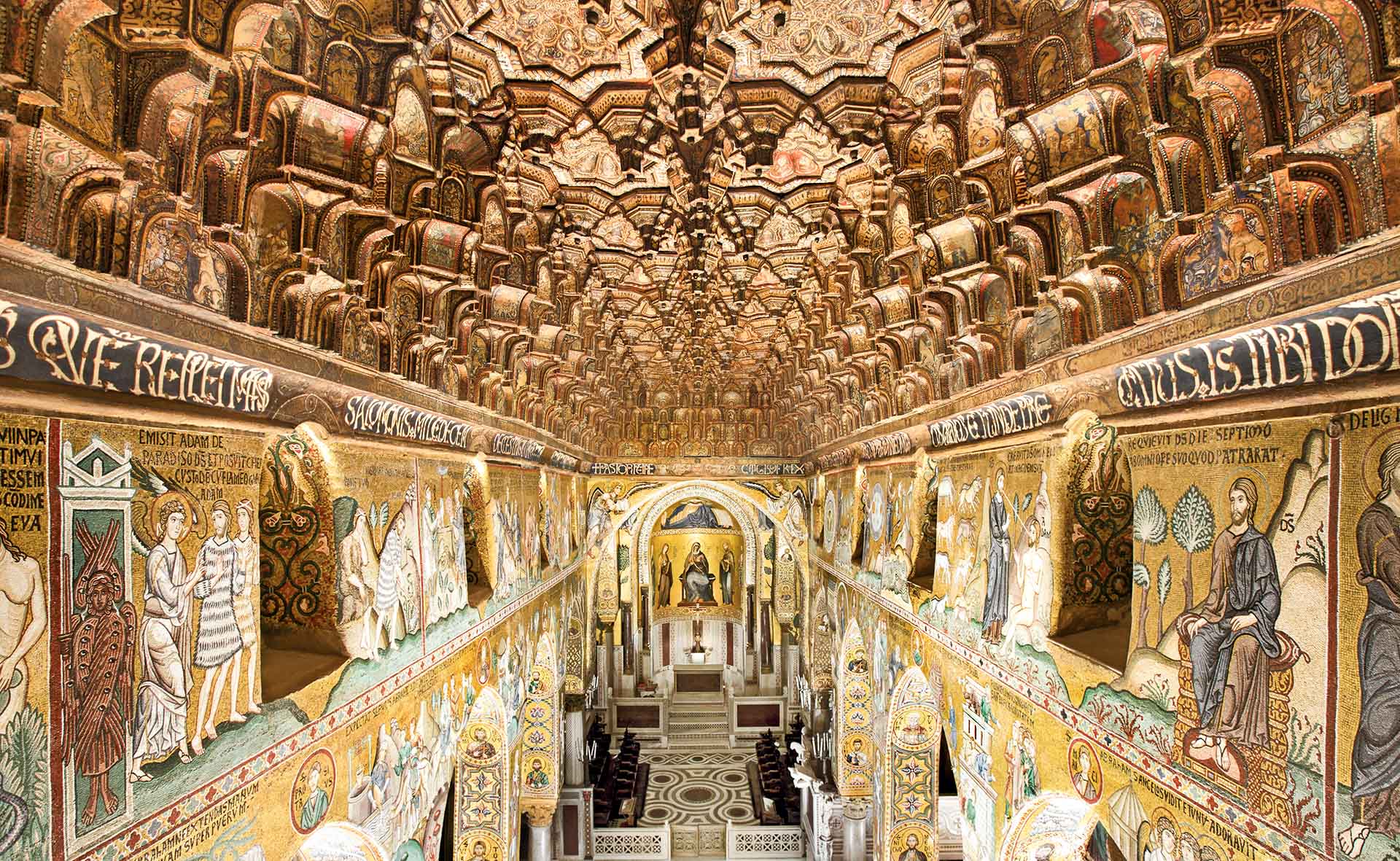Located on the first floor of the Norman Palace and it was dedicated, by will of Roger II as its made clear in a document from 1132, to Saint Peter Apostle, this already before the official document from 1140. Bears the year 1143 the inscription on the base of the dome, which sets a coeval date to the mosaics on the presbytery and leaving , as proved by the stylistic analysis, contemporary to the kingdom of William I the mosaics in the naves.
Its the highest example, from an historic and artistic point of view, of the coexistence between cultures, religions and ways of thinking apparently irreconcilable, as Byzantine, Muslim and Latin handcraft masters were involved by the wisely managed power of Roger II. The Chapel arose to synthesized the liturgical needs of both the Latin and Greek rituals, proof of this is the
Latin plant divided in three naves and the presbytery (byzantine), surmounted by a dome, made exactly according to the most classic byzantine codes. Interesting is the repetition of this element in the basin of the central apse, where it has a communicative and mercifully effect to whom enters the church. Among the ancient mosaics outstanding is the baptism of Christ, stupendous work with the stylization of the waves.
Images of Saints and Fathers of the Church are present on the pillars and on the soffits of the arches.
On the side naves, decorated under the kingdom of William I are narrated episodes of the lives of Saint Peter and Saint Paul and in the central nave the events of the Old Testament. The marble chandelier to hold the Easter candle, leaning on the ambo, an elegant sculpture made probably by artists with ties to North of Italy.
The Arab handcraft masters realized the vault in muqarnas, that dominates the central nave, a unique example in the whole world of pictorial Islamic decorations with human representations inside a worship place. A structure entirely fabricated in wood, wisely elaborated in sections united by insertions ,with stalactite and concave elements, that remind us of a cave. An inscription in Latin, Greek and Arab in 1142, in memory of the hydraulic watch made by Roger II, which is testimony of the fusion of cultures in Norman Palermo (the inscription is located in the Maqueda Courtyard on the wall on the left side before entering the Chapel in direction to the stairs that conduct us to the Fountain Courtyard and its translated in its byzantine version “Oh new wonder! The strong Sir Roger having had the scepter from God , stop the course of the fluid substance, distributing cognition free of error from the hours of time. In the month of March fifth call and of our health the year 1142, and of his happy kingdom the year XIII” ).
The mosaics on the frontage at the entrance where performed during the beginning of the XIX century by Santi Cardini and Pietro Casamassima and represent the events of the life of Assalon, rebel son of king David. This cycle was realized by will of Ferdinand III of Bourbon (present along with his wife Maria Carolina in the medallion on the mosaic with the Genius of Palermo crowned).
Palatin Chapel
